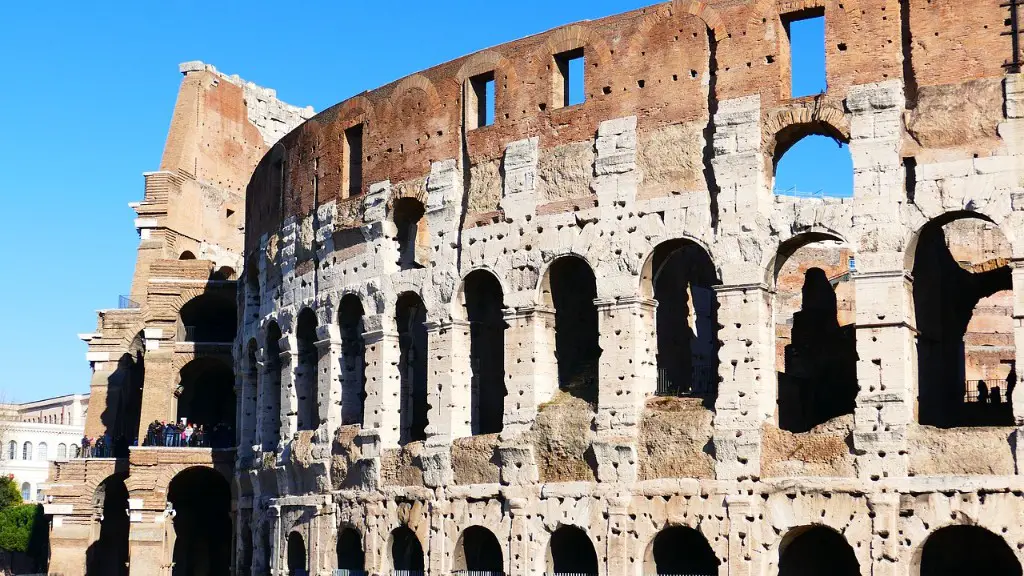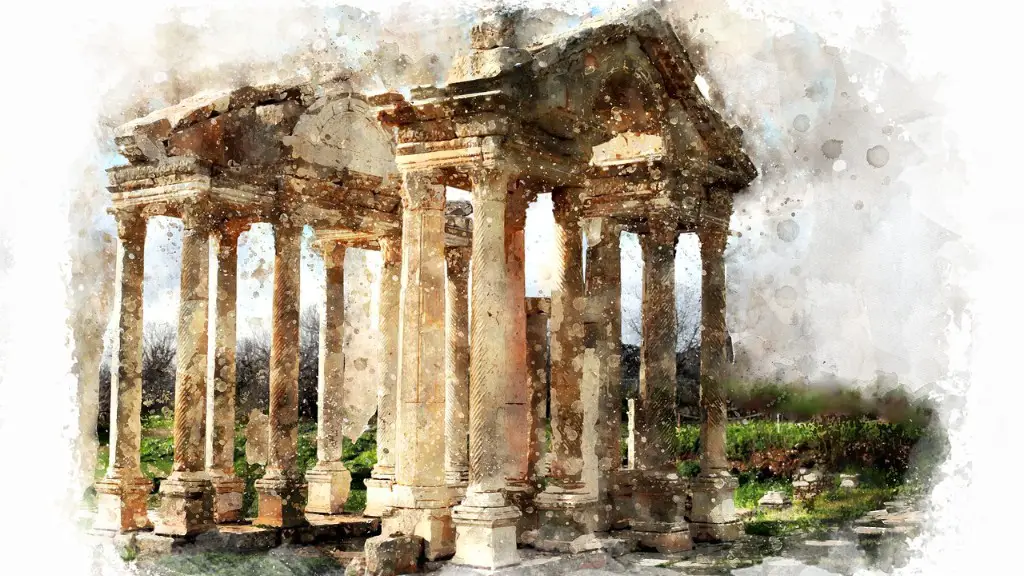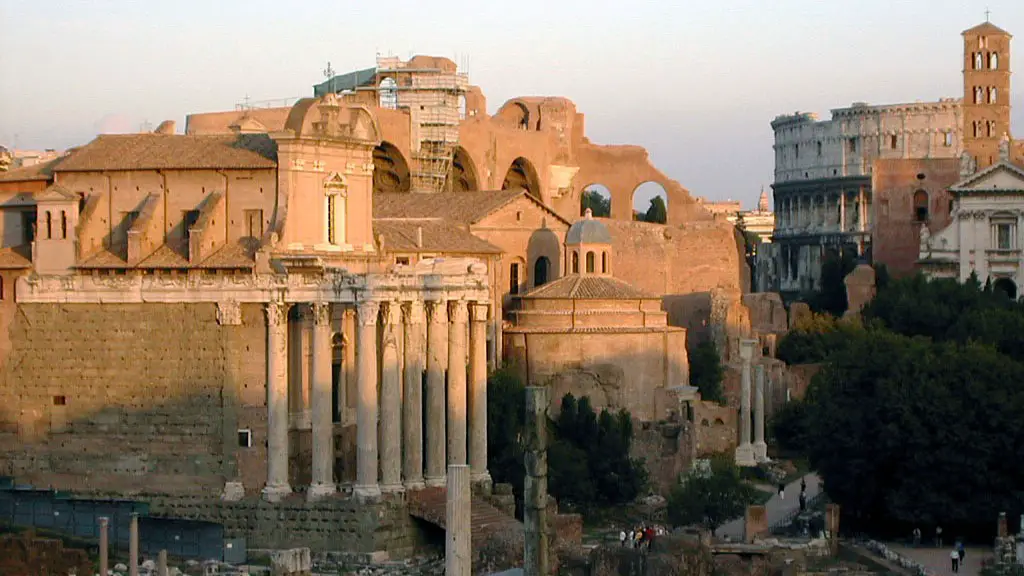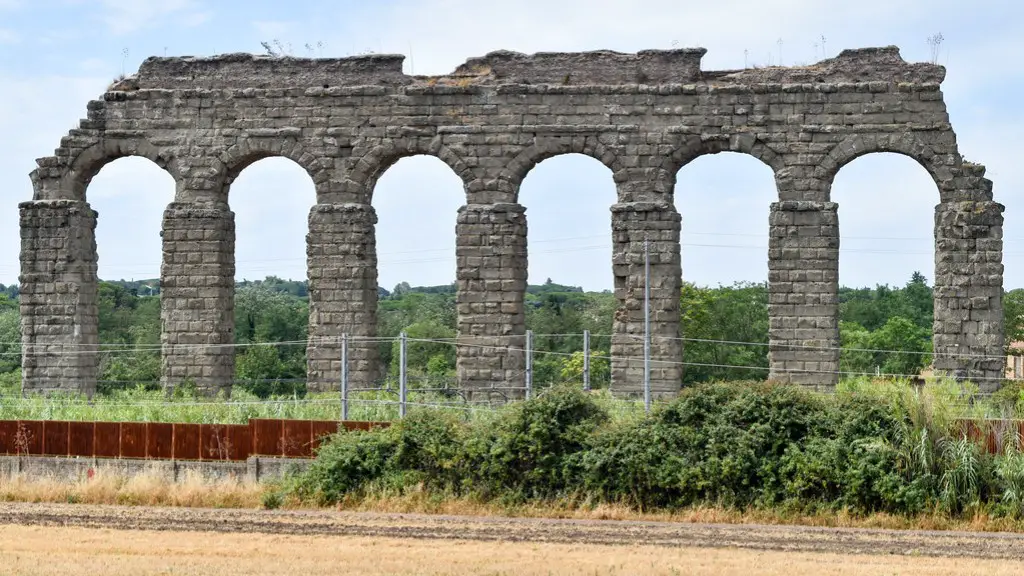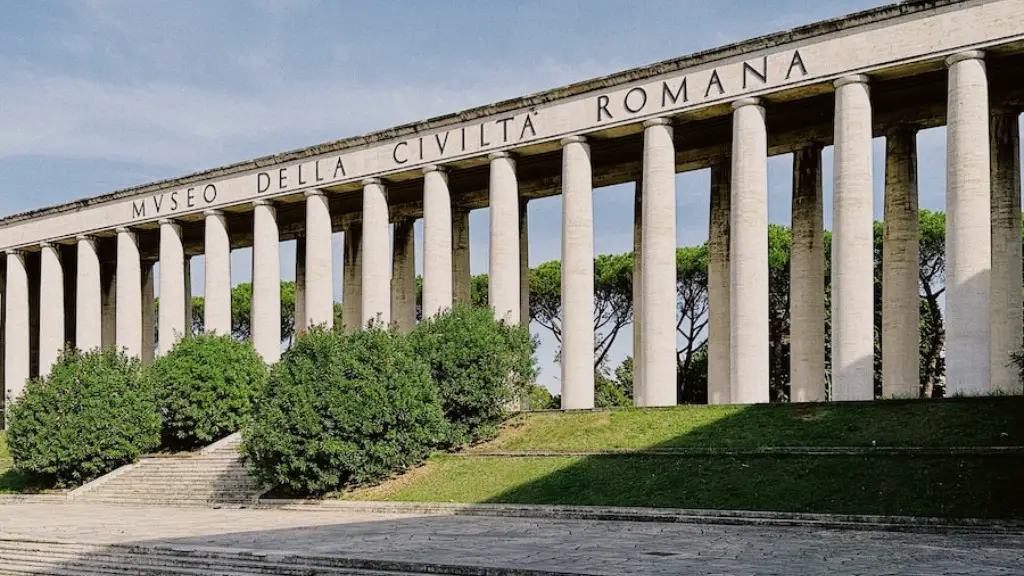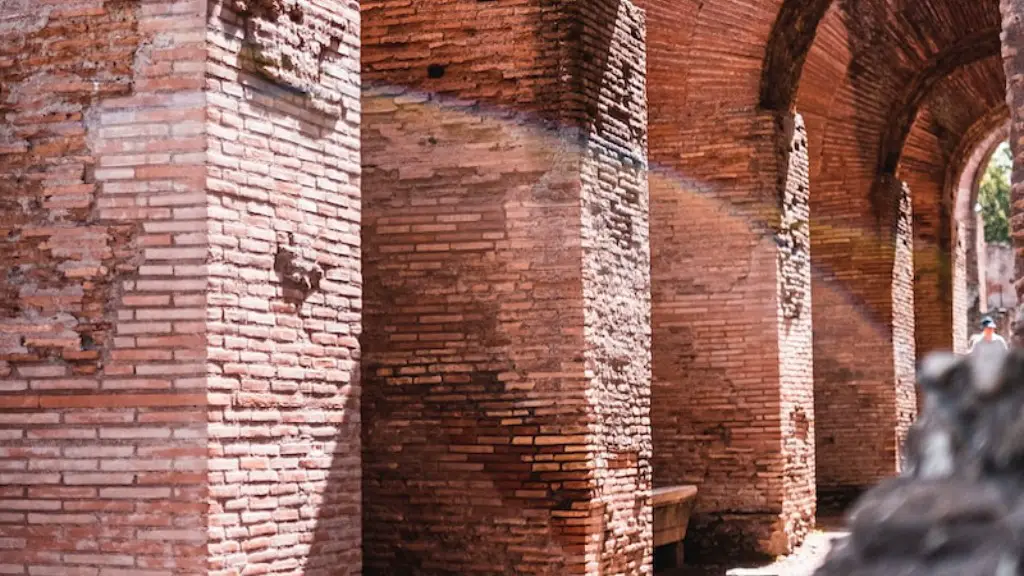The ancient Romans were not only responsible for some of the most significant advances in medical knowledge and practice, but their ideas and methods also form the foundation of much of modern medicine. Roman physicians such as Galen and Celsus were among the first to systematically document and codify medical knowledge, and their works remain influential to this day. The Romans were also responsible for major innovations in surgical techniques, hospital administration, and medical education. In many respects, then, the debt that modern medicine owes to the ancient Romans is immeasurable.
The ancient Romans made many contributions toward modern-day medical practices. They were among the first to develop organized medical care, with hospitals and clinics serving the sick and injured. Roman doctors were also some of the first to use scientific methods to examine and treat patients. They pioneered the use of autopsy to study the human body and to identify the cause of death. Roman surgeons were skilled in a variety of operations, and they developed new techniques for repairing broken bones and treating wounds.
What did the Romans contribute to modern medicine?
Ancient Rome was responsible for many great accomplishments, one of which was the founding of hospitals. These hospitals were designed to provide care for soldiers and veterans, and quickly became essential to the Roman people. The Romans were also master engineers, and built numerous aqueducts to supply water to their cities and towns. These two achievements helped to make Ancient Rome one of the most advanced civilizations of its time.
While ancient Rome’s doctors may have prescribed macabre elixirs and used dreams for diagnoses, they also made significant medical advances. By combining scientific knowledge with supernatural and religious beliefs, ancient Rome’s medicine was able to make significant progress.
What contributions did the Romans make to the field of public health
Public health is the science of protecting and improving the health of people and their communities. It is a multi-disciplinary field that draws from a variety of disciplines, including medicine, epidemiology, sociology, psychology, public policy, anthropology, and economics.
The Roman Empire was one of the first empires to develop a system of public health. The Romans believed that cleanliness would lead to good health, and they made links between causes of disease and methods of prevention. As a consequence, they developed a large system of public health works around their empire.
The Roman system of public health was based on a series of laws and regulations that were designed to promote cleanliness and prevent disease. The Roman system of public health included a network of aqueducts and sewers that carried clean water to homes and businesses, and a system of public baths that allowed people to bathe and stay clean. The Roman system of public health also included a system of hospitals that treated the sick and injured.
The Roman system of public health was highly effective in preventing disease and promoting cleanliness. However, it was also very expensive to maintain. As a result, the Roman system of public health slowly declined after the fall of the Roman Empire.
Despite the decline
The ancient Romans were a significant force in shaping the world as we know it today. From bridges and stadiums to books and the words we hear every day, the ancient Romans have left their mark on our world. Ancient Romans have had a tremendous impact on art and architecture. We can find traces of Roman influence in forms and structures throughout the development of Western culture.
What 3 Roman contributions still influence our lives today?
The Roman civilization was one of the most influential in history. Many of the things we take for granted today were first introduced by the Romans. Here are 13 things the Romans did for us:
1. Fast food – The Romans were the first to introduce street stalls and ‘food on the move’ as we might think of it today.
2. Advertising and trademarks – The Romans were the first to use signage and branding to promote businesses.
3. Plumbing and sanitation – The Romans were the first to develop widespread systems of plumbing and sanitation.
4. Towns – The Romans were the first to develop towns and cities as we know them today.
5. Architecture – The Romans were the first to develop many of the architectural features we take for granted today, such as arches and vaults.
6. Roads – The Romans were the first to build a network of roads that spanned the entire empire.
7. Our calendar – The Roman calendar was the first to use the names of the months we use today.
8. The Latin language – The Romans were the first to standardize the Latin language, which is the basis for many modern languages.
9. Law and order – The
Cement, the Aqueduct, Sanitation, Roads, Social care and welfare, Julian Calendar, Elements of surgery, Elements of the modern legal system are some of the most important inventions of the Roman empire that have had a lasting impact on the world. Even now, their developments continue to touch our lives and contribute to the world.
How effective was Roman medicine?
While knowledge of anatomy was quite impressive, and many surgical techniques were only surpassed in the modern age, the application of medicines and cures was simplistic and largely ineffective. Much of the Roman system was adopted from the Greeks, and primarily the teachings of Hippocrates. The Roman approach to medicine was more focused on treatment through diet, rest, and exercise, rather than through the use of drugs or surgery. This approach was largely ineffective in treating serious injuries or diseases.
The Greek civilization was one of the most advanced of its time and their approach to medicine was highly influential. Greek doctors used rational thinking when dealing with medicine and this approach continues to influence medicine today. Greek doctors turned the corner from a reliance on divine intervention for healing to practical, natural solutions. This shift was a major breakthrough in the field of medicine and helped to pave the way for modern medicine as we know it.
What medical tools did the Romans invent
A vaginal speculum is a device that is used to visualize the inside of the vagina. It is inserted into the vagina and then opened up so that the inside of the vagina can be seen. A rectal speculum is a device that is used to visualize the inside of the rectum. It is inserted into the rectum and then opened up so that the inside of the rectum can be seen. Bone levers are devices that are used to lever bones back into place. They are inserted into the affected area and then lever the bone back into place. Bone forceps are devices that are used to clamp down on bones. They are inserted into the affected area and then clamped down on the bone. Cupping vessels for bloodletting are devices that are used to collect blood during bloodletting. They are placed over the area where the blood is being drawn and collect the blood. Tubes to prevent contractions and adhesions are devices that are inserted into the uterus to prevent contractions and adhesions. Tile cautery is a device that is used to cauterize tissue. It is placed on the tissue to be cauterized and then heated so that the tissue is destroyed.
The Roman aqueducts were built to bring water to public baths and private homes. The sewers were built to carry away waste. The public baths were built for people to wash. The Romans also introduced the idea of washing hands before eating.
What is the most important Roman contribution?
The Many Lasting Contributions of Rome
The ancient Romans were a highly advanced and innovative people, as evidenced by their many lasting contributions to society. In particular, they were extremely skilled in engineering and construction, as evidenced by their invention of cement and their development of huge arches and domes made from this material. Additionally, their development of a nationwide system of roads – totaling over 50,000 miles – helped to unify the sprawling Roman Empire. Other notable contributions include the founding of the city of Rome itself, the creation of the Latin alphabet, and the establishment of the Roman Republic. Truly, the legacy of the Roman people is one that continues to be felt in the world today.
The Roman legal system was highly influential in shaping the modern Western legal system. Many of the concepts that we take for granted today, such as trial by jury, civil rights, contracts, personal property, legal wills, and corporations, all were influenced by Roman law and the Roman way of looking at things. The Latin language spoken by the Romans also spread throughout much of Western Europe during the time of the Roman Empire, further cementing their legacy.
What are two examples of Roman influence are in modern life
Some examples of Roman-influenced art forms today are murals in restaurants, banks, and other buildings; lifelike statues; cut gems and cameos. Roman art was highly realistic, and the influence of Roman art can still be seen in many modern art forms.
Roman law had a significant influence over the modern-day laws of many countries. Legal ideas like trial by jury, civil rights, contracts, personal property, legal wills, and corporations were all influenced by Roman law and the Roman way of looking at things. The impact of Roman law on the modern world is undeniable, and it is fascinating to see how such an ancient legal system can still have such a major impact on the way we live today.
Which of the Roman achievements have had the most long lasting impact on the modern world?
The Roman alphabet is the alphabet that is most commonly used in the western world. It is based on the Latin alphabet, which was used by the ancient Romans. The Roman alphabet has been used for centuries, and it is still in use today.
The public health system in Rome was developed in order to promote cleanliness and good health among citizens. The Roman Empire was well-known for its efficient and well-organized government, and public health was just one of the many areas of governance that the Romans took seriously. They made links between causes of disease and methods of prevention, and as a consequence, Roman public health works were distributed around their empire. This system proved to be effective in keeping the populace healthy and free from disease.
What kind of medicine is Roman
Roman is a telehealth company providing medication and treatment for erectile dysfunction (ED), hair loss, and premature ejaculation. Roman operates through its website GetRoman.com. Roman offers a free online consultation with a licensed U.S. doctor, and offers a variety of treatment options and medication.
It’s no surprise that many Romans were attracted to the idea of being healed through pleasure, given the standard treatments at the time, which included bloodletting, purging, fasting, and cauterization. As Pliny concisely put it, “the success of Asclepiades owed much to the many distressing and crude features of ancient medical treatment.”
Warp Up
Some ancient Roman medical practices have been adopted into modern-day medicine. These include the use of empirical observation to make medical decisions, the development of medical ethics, and the founding of hospitals.
The ancient Romans were ahead of their time in many ways, including their contributions to medical practices. Today, we still use many of the same techniques and treatments that the Romans developed, thanks to their knowledge and innovative thinking. From basic medical knowledge to more advanced procedures, the ancient Romans have left a lasting mark on the world of medicine.
